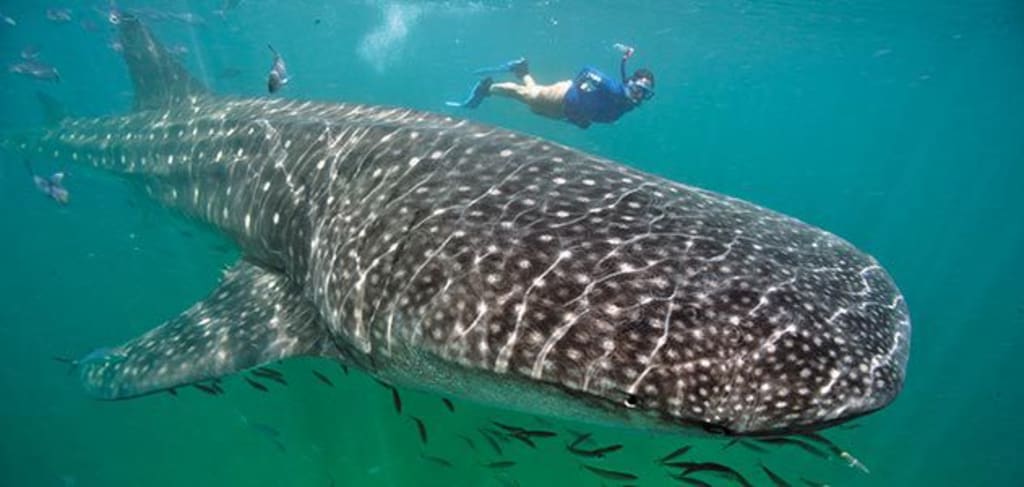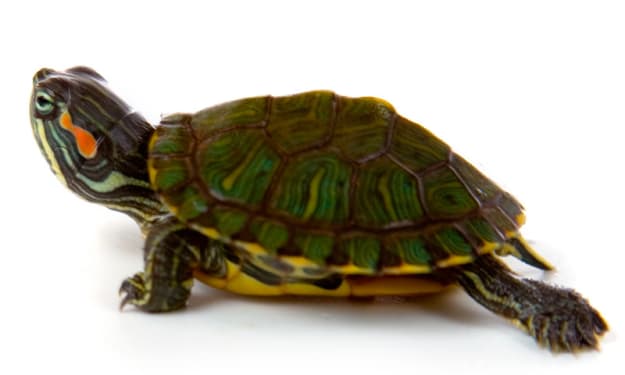Six Facts About the Whale Shark
Get to Know the Largest Species of Fish to Be Alive Today

The largest shark to ever be alive today, the whale shark (Rhincodon typus) feeds on plankton and travels very long distances in order to find enough food to sustain their large size and breed. These sharks can grow up to 40 feet long and weight up to about 11 tons. They are found in all of the world’s tropical oceans and are regarded as gentle giants. Here are some Six facts about these magnificent sharks (Disclaimer: Despite the name, whale sharks are not related to whales in any shape or form).
1. They are filter feeders.
Like the basking shark, whale sharks are filter feeders. This means that means in order for them to eat, the beast just out of their large jaws while passively filter out everything in their path. This is known as “cross-flow” filtration, a technique of feeding that is used by some bony fish species and baleen whales. They feed on plankton, copepods, krill, fish eggs, crab larvae, squid and smaller species of fish. In addition, they have been known to feed on egg clouds during the mass spawning of fish or coral. According to studies done on whale sharks, juveniles may eat up to 46 pounds of plankton a day.
2. Yes, they do have teeth
Although whale sharks do not use their teeth for feeding like many other shark species do, they still do have a set of teeth of their own. They have jaw of about four-foot wide rows of up to 350 teeth. In addition, they also have ten filter pads that are used for filter feeding.
3. They have been famously known to interact with people.
Despite their large size, whale sharks do not pose as a threat to people. In fact, as docile animals, whale sharks have been known to interact with human swimmers by allowing them to catch a ride. However, this is discouraged by shark researchers, who believe that it’s invasive the well-being of the animal. Still, younger animals are reported to be very gentle and playful with divers and they have been photographed up-close without any incident between people and the sharks. In the Philippines, there is even an account of a fisherman feeding shrimp to whale sharks that swim by their boats every morning and whenever tourists and divers are in the area. In Australia, divers, tourists, and scientists come to Ningaloo Reef to learn about whale sharks and encounter them out in the wild. These extrusions occur between February and March when the sharks are more common in the area and there are virtually guaranteed sightings of the animals in question.
4. They are ovoviviparous.
While scientists have yet to observe mating behavior between whales or even a live birth at best, records from the 1990s tell us that whale sharks are ovoviviparous. This means that females will produce eggs that will remain in their bodies until they hatch in utero. From there, they will eventually give live birth to almost up to 300 pups. Additional records even tell that us that pups are not all born at once, but rather, their mother will retaliate sperm from mating with various breeding males and from there, will produce a stream of pups over a period of time. At birth, whale shark pups are only 15 inches long and will reach sexual maturity at around 30 years of age. Although no one has seen a whale shark grow from birth to old age, their lifespan is believed to be around 70-100 years.
5. Only a few aquariums house them.
Since the early 1980s, only a very few aquariums around have kept whale sharks in their care. This is because their large size requires facilities to provide them large pools that can encourage their continuous growth and a feeding requirement that is very different from other animals in human care. Georgia Aquarium is currently the only aquarium in the western hemisphere that houses whale sharks. The animals were rescued from fishery in Taiwan where they were going to be sold for consumption. This fishery eventually closed in 2008. The other facilities that currently house whale sharks are in Japan, China, and Taiwan.
6. They are endangered.
In some parts of the world, particularly in Southeast Asia, whale sharks are highly valued as a delicacy and their meat is often sold to markets in India, Taiwan, and in the Philippines. In addition, oil spills from tankers have also been proven to serve as a threat to whale shark populations worldwide as well as being victims of by-catch, and accidental capture of non-targeted species. While bans on the hunting, trafficking, import, export, and sale of whale sharks have been in place since the 1990s, the demand for their meat, fins, and oil remains a threat to the species. In addition, it is also believed that one population in the Indo-Pacific has declined by over 63 percent in the last 75 years. In response to public concern, whale shark identification surveys have been establishing to catalogue and estimate the world population of whale sharks based on the unique skin patterns of individual animals. It’s hope that these surveys will help research better understand these animals and establish better conservation efforts that could make population changes measurable on a long run.
So, those are the six facts you need to know about whale sharks and why they matter when it comes to their importance in the marine ecosystem. I hope you feel inspired to know more about whale sharks.
About the Creator
Jenna Deedy
Zoo and Aquarium Professional, Educator, Cosplayer, Writer and B.A. in Psychology whose got a lot to share when it comes to animals, zoos, aquariums, conservation, and more.
Instagram: @jennacostadeedy






Comments
There are no comments for this story
Be the first to respond and start the conversation.